Shipping containers come in various sizes, and their dimensions are critical to ensuring seamless transportation, handling, and storage of goods. Standardized by the International Organization for Standardization (ISO), these containers are available in typical lengths such as 10 feet, 20 feet, and 40 feet, with a width of around 8 feet. Understanding the dimensions is essential for selecting the right container for shipping requirements and maximizing efficiency.
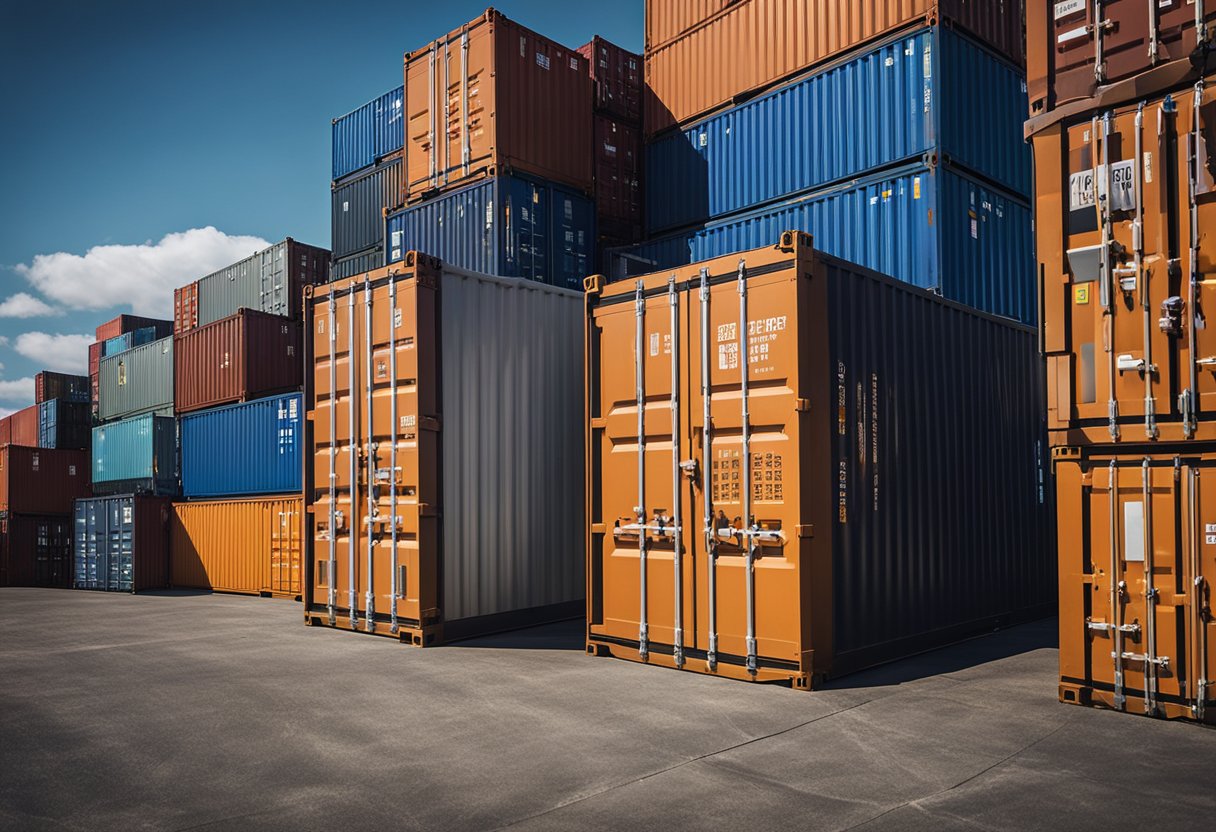
One key aspect to consider is the height of a shipping container. There are standard height containers at 8 feet 6 inches and “high cube” containers at 9 feet 6 inches, which offer an additional foot in height for accommodating bulkier or higher volume cargo. Such variations in size are designed to cater to the diverse needs of the shipping industry, from moving everyday goods to transporting specialized items.
Certain less common shipping container sizes also exist, including 48-foot and 53-foot containers, as well as pallet-wide and specialized containers like half-height, tricon, and side-opening options. As demand for efficient and customized shipping solutions grows, it is crucial to be aware of the various container sizes and dimensions available in the market to make well-informed decisions for transport and storage purposes.
Standard Shipping Container Dimensions
Shipping containers come in various sizes and dimensions to accommodate diverse storage and transportation needs. This section discusses the dimensions of the most commonly used shipping container sizes, including 20-foot containers, 40-foot containers, and high cube containers.
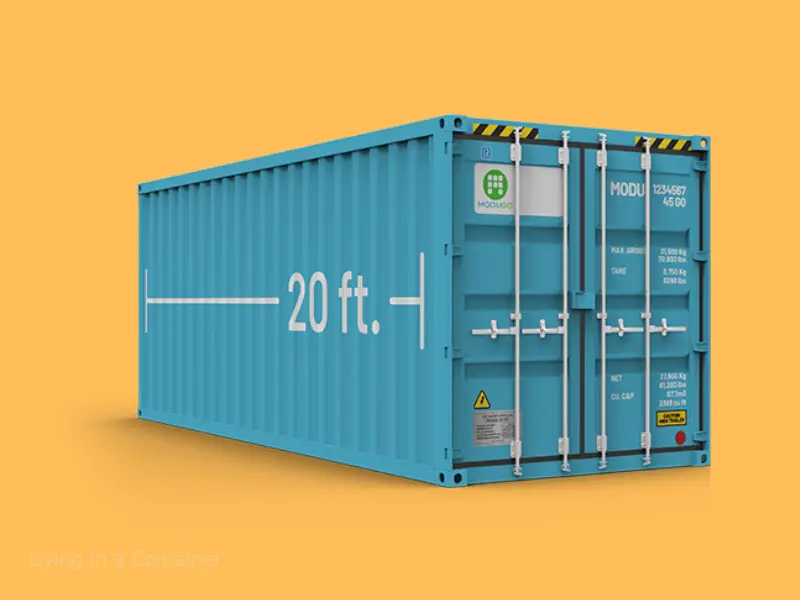
20-Foot Containers
20-foot shipping containers, or 20ft containers, are widely used for domestic and international shipments. These containers measure 20 feet (6.06 meters) in length, 8 feet (2.43 meters) in width, and 8.5 feet (2.59 meters) in height. Their internal dimensions are slightly smaller, with a length of 19 feet 4 inches (5.9 meters) and a width of 7 feet 8 inches (2.34 meters). The typical volume of a 20-foot container is around 1,172 cubic feet (33.2 cubic meters).
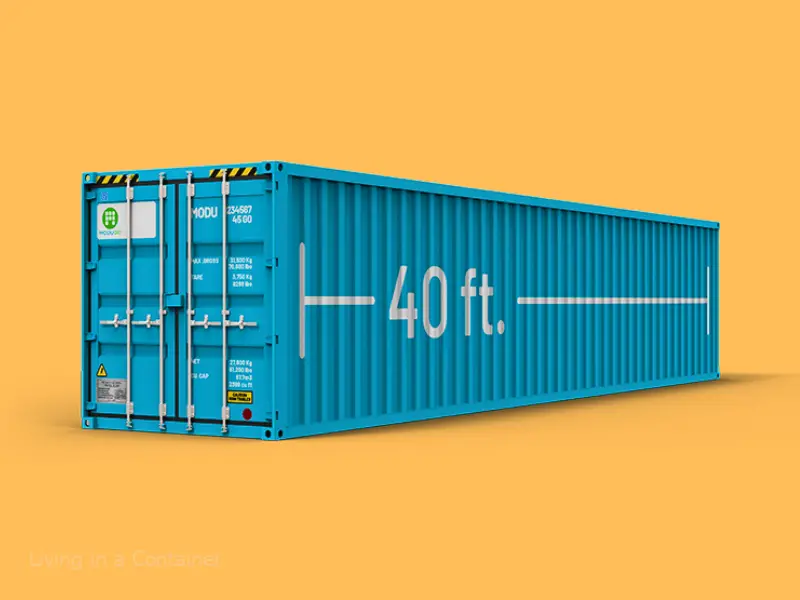
40-Foot Containers
40-foot containers provide double the storage capacity of 20-foot containers. They measure 40 feet (12.2 meters) in length, 8 feet (2.43 meters) in width, and 8.5 feet (2.59 meters) in height. The internal dimensions are approximately 39 feet 6 inches (12 meters) in length and 7 feet 8 inches (2.34 meters) in width. The volume of a 40-foot container is approximately 2,390 cubic feet (67.7 cubic meters), making it a popular choice for larger shipments and storage requirements.
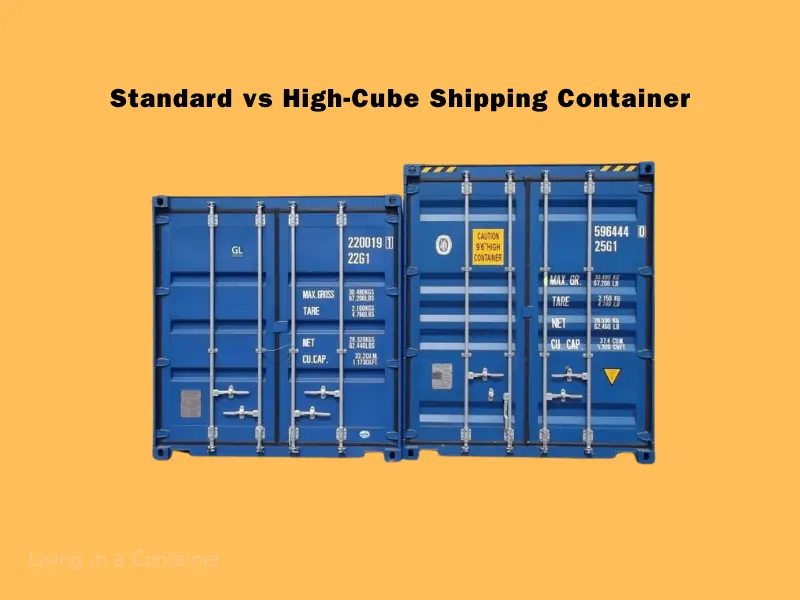
High Cube Containers
High cube containers offer extra height for more storage or better air circulation. These containers are available in 20-foot and 40-foot sizes, with the main difference being their height. High cube containers have a height of 9.5 feet (2.89 meters) compared to the standard 8.5 feet (2.59 meters). This additional height increases the volume for 20-foot high cube containers to 1,280 cubic feet (36.2 cubic meters) and 40-foot high cube containers to 2,700 cubic feet (76.4 cubic meters).
In summary, the three primary types of shipping containers have different dimensions to accommodate diverse storage and transportation needs. The 20-foot and 40-foot containers are the most common sizes, with high cube containers offering increased height for special requirements.
Specialized Container Sizes
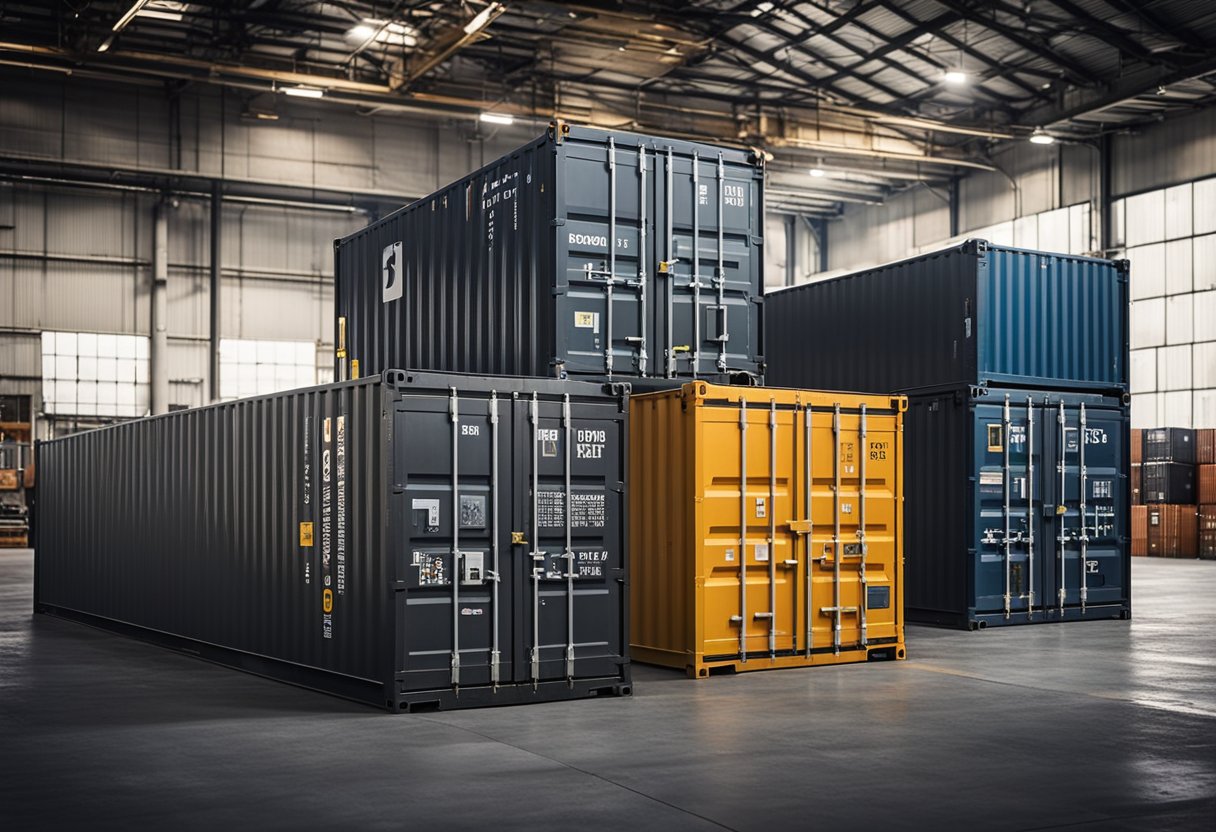
This section will explore specialized container sizes, focusing on 3 different types: 10-foot containers, 45-foot high cube containers, and 53-foot containers.
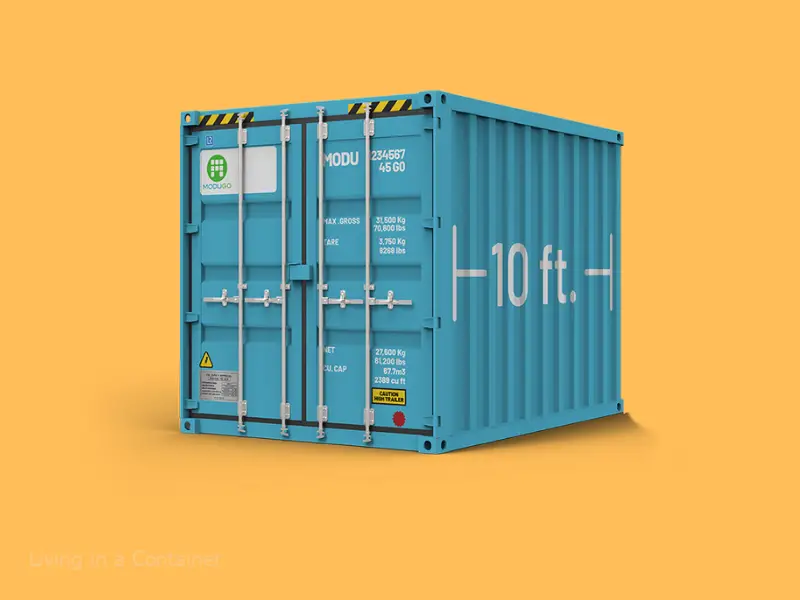
10-Foot Containers
10-foot containers are the smallest standard size option available in the shipping container market, offering storage similar to half a one-car garage1. Their dimensions measure 10 feet long, 8 feet wide, and 8.5 feet high, with an interior length and width of 7 feet 8 inches and 7 feet 10 inches1. These containers are ideal for storing items from around the house or yard and are a popular choice for tight spaces. Considering their compact size, these containers can easily fit into half a parking space.
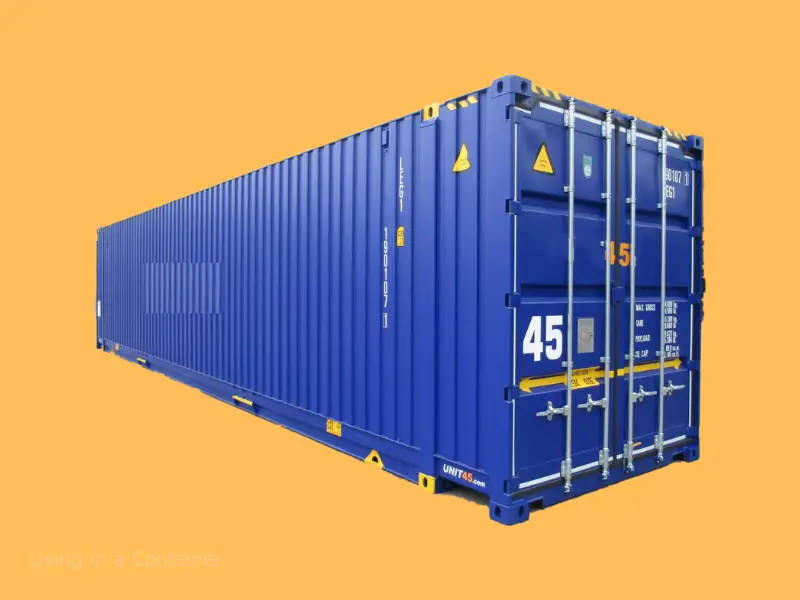
45-Foot High Cube Containers
45-foot high cube containers are a larger alternative in the shipping container industry, with dimensions measuring 45 feet long, 8 feet wide, and 9.5 feet high2. The additional foot in height compared to regular containers allows for increased storage capacity. These containers are especially suited for holding tall items or for when extra vertical space is required. Due to their extended length, they provide more storage area than 40-foot containers, and are predominantly used for transportation purposes.
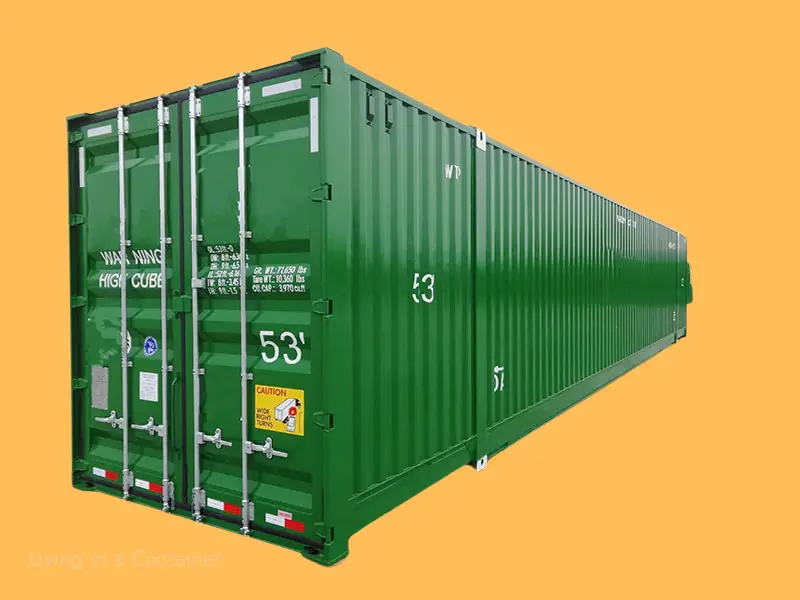
53-Foot Containers
53-foot containers are the largest standard container size, measuring 53 feet long, 8.5 feet wide, and 9.5 feet high. These containers are predominantly used in North America for domestic transportation and offer spacious storage capacity. Because of their large size, they can hold approximately double the cargo volume of 40-foot high cube containers. Despite their increased size, they maintain the same standard height of high cube containers, allowing for vertical storage options. *It is important to note that loading and unloading for 53-foot containers require specialized equipment due to their extra length.
Factors Influencing Container Size
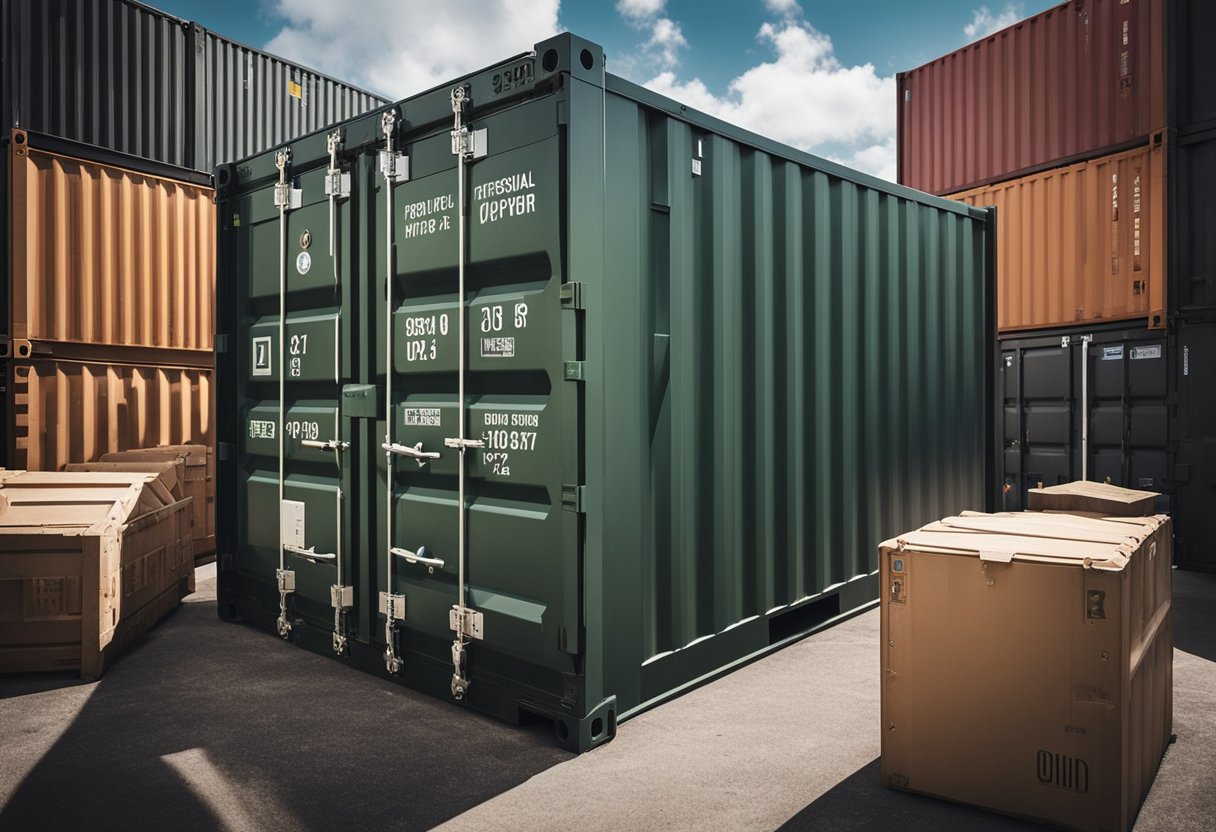
Transport Regulations
One of the primary factors influencing shipping container size is transport regulations. Each country has its own set of rules for transporting goods, including size and weight limitations. These restrictions ensure that containers can be safely and efficiently transported via road, rail, or sea without causing damage to infrastructure or accidents. Adhering to these regulations is crucial for safe and successful shipping, and container manufacturers design their products accordingly.
For example, in the United States, interstate highway systems have specific weight limits for vehicles, affecting the size and weight of containers that can be transported on them.
Cargo Type
Another factor influencing container size is the type of cargo being shipped. Different cargoes require different container dimensions to ensure they are adequately protected during transit. For instance, flat rack containers are ideal for shipping oversized items or those with irregular dimensions, such as industrial machinery and large vehicles. Conversely, insulated containers are better suited for transporting perishable goods since they can maintain stable temperatures.
Here’s a brief overview of common container types and their typical uses:
- Standard containers – General-purpose containers for various commodities.
- High cube containers – Taller than standard containers, suitable for light and voluminous cargoes.
- Open top containers – Allow for loading from the top, used for oversized cargo.
- Flat rack containers – For bulky, heavy, or irregularly shaped items.
- Reefer containers – Refrigerated containers for perishable goods.
- Tank containers – Designed for transporting liquids, gases, or bulk materials.
Choosing the right container size based on cargo type is essential to ensure the safety and efficiency of the shipping process.
Industry Standards
Lastly, shipping container sizes are influenced by industry standards set by international organizations, such as the International Organization for Standardization (ISO). These standards help maintain consistency across the global shipping industry, enabling seamless coordination between different modes of transport and countries.
The most common container sizes in the industry are:
- 20-foot containers: These are the standard size for general cargo and can typically hold up to 33,000 pounds (14,969 kg) of goods.
- 40-foot containers: These larger containers can handle up to 67,000 pounds (30,391 kg) of cargo, making them ideal for transporting larger quantities or bulkier items.
Understanding these industry standards allows shipping companies and customers to select the most appropriate container size based on their specific needs.
